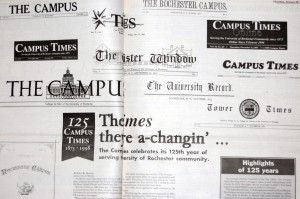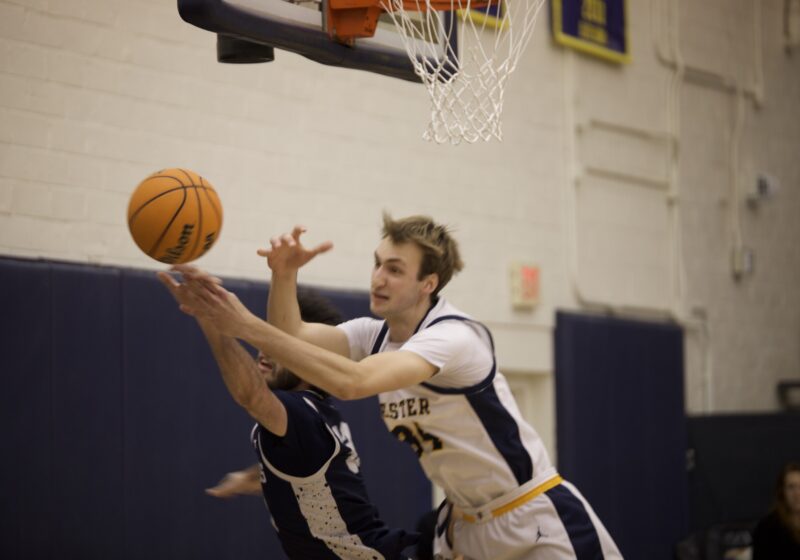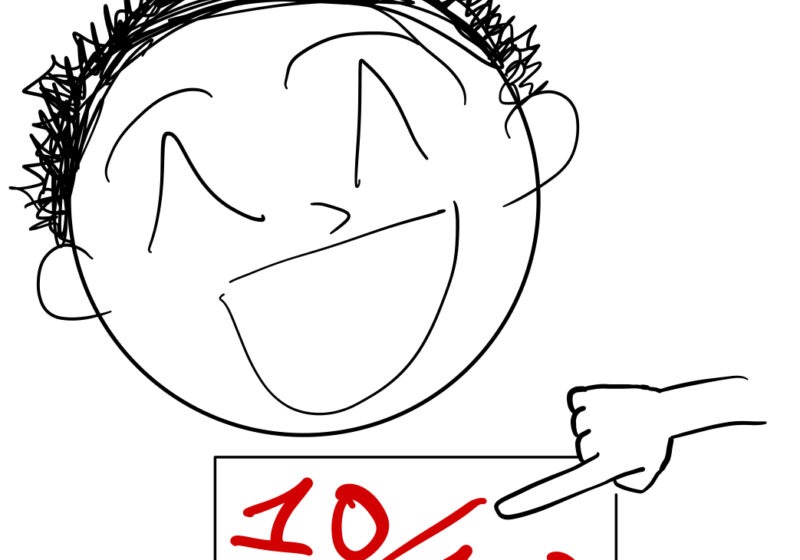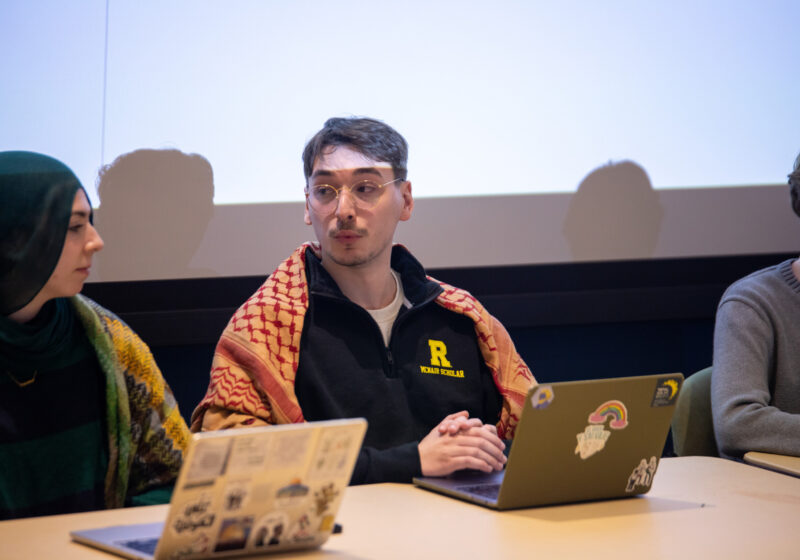On Thursday, Jan. 29, 1998, the Features front of the Campus Times ran the headline, “The Times, they’re a-changin’…” and underneath, in bold letters, “The Campus Times celebrates its 125th year of serving the Rochester Community.”
Fast-forward to the present — to CT’s 140th anniversary — and the aforementioned headline continues to ring true.
What originally began as a “combination between a literary magazine and a fraternity newsletter,” as the 1998 article writes, the CT has developed into a full-fledged newspaper over the years, growing in profound ways and pursuing new directions. The paper’s content, design, and editorial quirks have transformed rapidly, in tune with the University community’s readership.
As the article points out, tradition has played an important role at UR; Boar’s Head Dinner and Dandelion Day are just a few applicable instances. However, while the presence of the University newspaper dates back even further in time, each term’s staff has continued to defy — or in the very least alter — the standards of the paper that came before it.
Rewind to 1873, the year eight UR undergraduate men converged to produce “University Record,” the very first establishment of a college paper. Only three years after, the editorial board changed the paper’s name to the “Rochester Campus” which, as the writer of the article remarks, was “an unfortunate [name that was] commonplace in the extreme.” Ironically enough, the title was later shortened to simply the “Campus.”
In 1933, the “Campus” began shifting away from magazine-esque formats, losing its previous “literary-magazine character,” to focus more heavily on current news and issues concerning the student body and University community. As opinion pieces dealing with University expansion and administration policies surfaced, the “Campus” began covering national and international news events, such as a student’s firsthand account of Adolf Hitler’s rise to power in Germany.
Meanwhile, the women of UR challenged the “Campus” with their creation of “The Cloister Window,” a paper that was determined to “provide ‘fortnightly’ coverage of events and activities the male-oriented ‘Campus’ overlooked,” as stated in the article. Yet even the editorial board of “The Cloister Window” proved to be unsatisfied with the title; they went on to change the name to “Tower Times,” in light of the new tower constructed on the Prince Street campus.
The two papers continued to operate as separate entities until September 1954, when the staffs of the “Campus” and “Tower Times” began collaborating in preparation for the closing of the Prince Street campus. According to the article, when UR’s women moved to the River Campus in 1955, the two papers combined to form the “Campus-Times.” Eventually the editors dropped the hyphen and the paper assumed the title that is now near and dear to current readership.
Over these past 140 years, another changing — albeit less fickle — factor was the frequency of coverage. In the fall of 1973, the CT was being released daily. However, according to the article, publishing so frequently “took its toll on the paper’s reputation… The quality of campus coverage declined.” When the CT returned to semi-weekly publishing in the late 1980s, the situation improved yet still appeared grim. With a return to weekly publishing in the early 1990s, along with a newspaper-wide reorganization, the CT’s credibility was re-established.
As for CT’s physical hub, the magic didn’t occur solely in one location. Originally on the Prince Street campus, the CT office was at one point located in Todd Union, as the staff shared a 12 by 20 foot room with LOGOS, the University’s literary magazine. In 1973, the CT moved into its present location in the then newly finished Wilson Commons. And, of course, in order to keep up with “a-changin” times, the CT went digital and launched its online edition in February 1996.
No matter what, the practice of publishing stories has remained essentially the same, regardless of whether they materialized from a typewriter or a Mac. To this day, though, the CT demonstrates ever-developing forms — as evidenced by this issue’s altered front page. And despite the changes in physical space, despite the differing titles, despite the frequency of dissemination, CT’s presence will remain as one of UR’s most powerful traditions.
Kerem is a member of the class of 2015.




